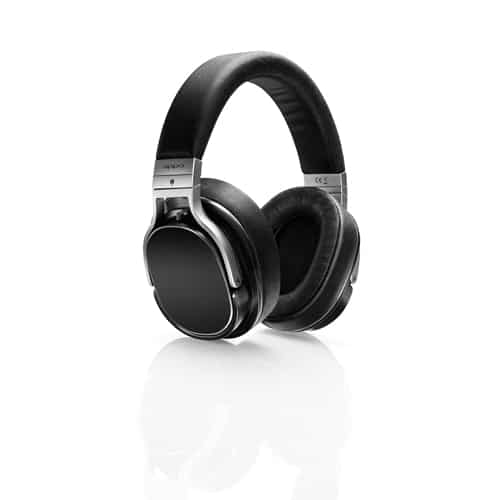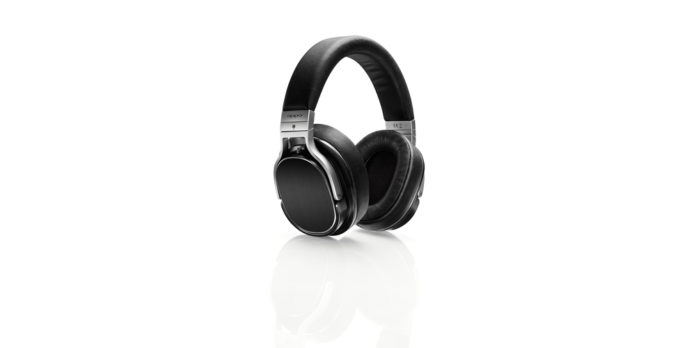The Oppo PM-3 is a basic planar-magnetic closed-back headphone with a price of $399. Here at MahorHifi, we see a lot of people asking about this particular model, and one recently found its way to my review desk. So without any further delay, here’s our take on this headphone.
Oppo PM-3 Review

Packaged in a swanky box, these headephones come with a semi-hard carrying case, a removable audio cable, a drawstring nylon pouch (for said audio cable), and a 1/4” screw-on stereo adapter plug.
To its credit, the Oppo PM-3 seems to built fairly well, with aluminum extenders, solid metal earcups, and a thick headband. Generous pleather padding on the headband and earcups offer an impressive level of comfort.
Specs
| Acoustic Principle | Closed back |
| Ear Coupling | Circumaural |
| Nominal Impedance | 26 Ohm |
| Sensitivity | 102 dB in 1 mW |
| Clamping Pressure | 5 N |
| Cables | 3 m detachable cable (3.5 mm with 6.35 mm adapter) 1.2 m detachable cable (3.5 mm) |
| Cable Connectors | Output: 3.5 mm stereo jack Input: 6.35 mm stereo jack, 3.5 mm stereo jack |
| Weight (without cable) | 320 g (Black/White), 310 g (Cherry Red/Steel Blue) |
| Included Accessories | Carrying Case User Manual |
| Driver Specifications | |
| Driver Type | Planar Magnetic |
| Driver Size (Round) | 55 mm diameter |
| Magnet System | Symmetric push-pull neodymium |
| Frequency Response In Free-Field |
10 – 50,000 Hz |
| Long-Term Max Input Power |
500 mW according to IEC 60268-7 |
| Pulse Max Input Power | 2 W |
These headphone specs reveal a wide frequency range, decent volume, and a low nominal impedance. You won’t need an amplifier to take advantage of the sound this headphone is packing.
Low End
The PM-3 isn’t quite as deep in the low end as I was expecting. Detail is okay, but for a planar-magnetic headphone, the detail doesn’t sound much better than the low-end on a similarly-priced dynamic driver model. Bass is fairly clean, but the whole deal seems somewhat relaxed.
Mids
Ah, the midrange! Here we’ve got some decent detail and good accuracy lurking under the surface. I can’t tell if the culprit is distortion or compression, but the whole midrange seems just a shade muffled, as though it has been veiled. Probably due to dampening on the planar-magnetic driver itself, this isn’t a totally abysmal sound, but it could be better.
High End
The PM-3 has a decent high end with good detail. While not necessarily bright, the sound can sometimes border on sparkling. Strings and vocals sound equally smooth, and fidelity is through the roof.
Soundstage
A fantastic sense of depth and placement on these headphones kicks soundstage into overdrive. Close your eyes and get swept up in the music, and forget you’re actually wearing a pair of headphones.
Overall Impressions
With an overall relaxed sound and a little too much damping in the lows and mids, the highs save this headphone from sounding like complete rubbish. For a planar magnetic headphone I was expecting more, and when you stack it up against similar technology (like the Audeze Sine), you can easily discern the shortcomings of this headphone. But doubtlessly more damning was the realization that the sound of the $399 Oppo PM-3 is almost identical to the $249 Audio Technica MSR7.
Recommendations
If you love the look of the Oppo PM-3 and you really want to own a pair, buy these headphones. However, if you’re buying decision hinges at all on the sound quality of these headphones, you are probably better off with another model. It’s not that they sound objectively terrible, but they are definitely overpriced. If you’re a fan of classical or acoustic, or you just prefer a sound with more emphasis on the mids and highs with plenty of detail across the frequency range, go with the Audio Technica MSR7. Or, if you’re looking for the low-end detail that most people expect from a planar-magnetic headphone, shell a little more dough for the $449 Audeze Sine.
MAJORHIFI may receive commissions from retail offers.








